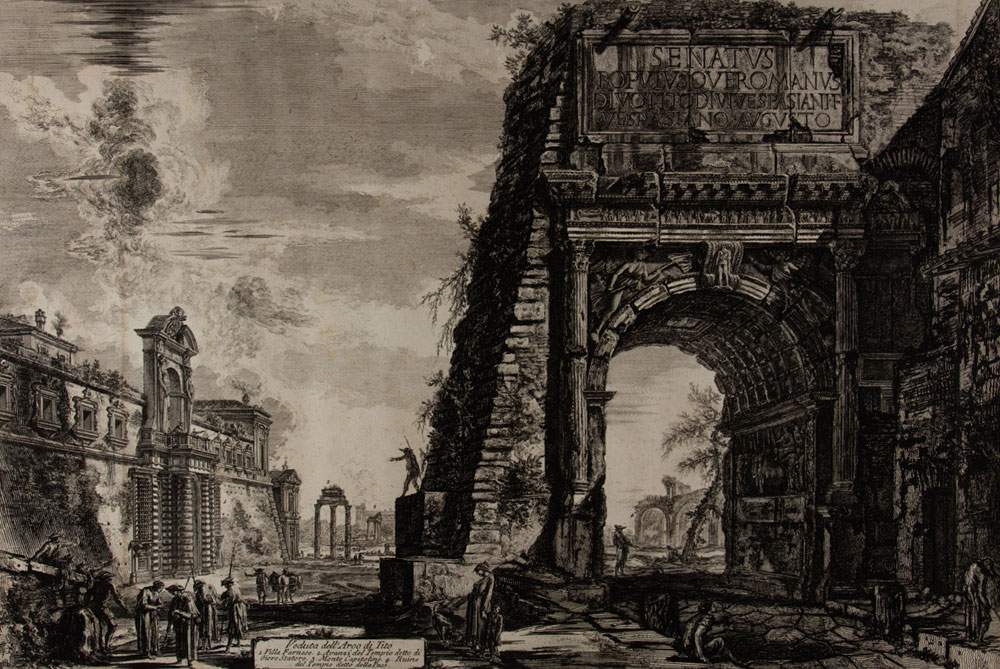Palazzo Sturm in Bassano del Grappa will host, from June 20 to October 19, 2020, the exhibition Giambattista Piranesi. Timeless Architect, during which it will be possible to admire the complete corpus of Piranesi’s graphic masterpieces preserved in Bassano’s collections. This includes loose engravings and many others gathered in volumes to which is added the complete series Carceri d’Invenzione, from the collections of the Giorgio Cini Foundation in Venice.
The exhibition, curated by Chiara Casarin and Pierluigi Panza, intends to pay tribute to one of the masters of engraving on the third centenary of his birth on Oct. 4, 1720.
It will unfold between the fourth and fifth floors of the Palazzo, inaugurated after the latest restoration campaign with the exhibition Albrecht Dürer. The Remondini Collection, with which the strand dedicated to the art of engraving was started.
Thus state the two curators,"Giambattista Piranesi. Timeless Architect is the complete exhibition of Piranesi’s engravings preserved in Bassano. It is an exhibition that responds to the desire to expose to the public the treasures preserved in the print room and in the archives of the Library and that confirms, once again, how much the teaching of the ancients is alive in contemporary art.“; furthermore, ”the exhibition that the Civic Museums of Bassano dedicate to the genius of Piranesi testifies to an important progress in the study of the permanent collections of the city and allows us to emphasize some clarifications on the biographical events of the artist and his family."
Giambattista Piranesi is considered the greatest exponent of18th-century Venetian engraving, but he was not only an engraver but also a draughtsman, antiquarian and architect. His work influenced architects, set designers, and painters and helped provide a powerful impact on the literary imagination. He arrived in Rome in his early twenties and moved there permanently from 1746, beginning the production of the famous Views of Rome, including those in the Bassano del Grappa collections: collections of plates depicting classical ruins and ancient monuments. In his engravings,the artist created architectures that were dreamlike but at the same time concrete.
Among the masterpieces on display in the exhibition are the famous Vedute di Roma, the four volumes of the Antichità Romane that form the core of Piranesi’s archaeological vision: they give an organic unified picture of the city of Rome through the identification of monuments, areas, spaces, city walls, aqueducts and city gates.
In addition, there will be sixteen plates from the Carceri d’Invenzione series, on loan from the Giorgio Cini Foundation in Venice. First published in 1748, the complete work was given to prints in 1761, circulated under the title Carceri d’Invenzione di G. Battista Piranesi archit. vene. Because of their extraordinary freedom of imagination and ability to transfer pictorial sensibility into the graphic sign, the engravings reveal the influence of the Capricci of Giambattista Tiepolo, whom Piranesi met presumably in 1745, shortly before his departure for Rome. Together with the Vedute, the Carceri d’Invenzione constitute the most famous work of Piranesi’s production and testify to the artist’s great skill in the use of engraving technique.
Deepening the exhibition will be two videos that narrate Piranesi’s success abroad and the main moments in the artist’s life: The Lumière Mystérieuse, written and directed by Massimo Becattini, and Giovan Battista Piranesi 1720-1778, made on the occasion of the major exhibition dedicated to the artist in 1978 by the Giorgio Cini Foundation in Venice. Also visible is the animation video that Factum Arte made in 2010, on the occasion of the exhibition The Arts of Piranesi. Architect, Engraver, Antiquarian, Vedutist, Designer, organized by the Giorgio Cini Foundation: created by Grégoire Dupond, it three-dimensionally reconstructs each room of the sixteen plates of the Carceri, allowing the viewer to have the feeling of walking inside these visionary spaces.
Finally, the curators have chosen to bear witness to Piranesi’s legacy in current artistic production through the art of Luca Pignatelli. As in the 18th-century artist, history is the protagonist in Pignatelli’s works and becomes a “layered representation of time,” as the contemporary artist himself defines it.
In anticipation of the opening to the public, the Civic Museums are telling the story of the exhibition on social channels with in-depth videos, behind-the-scenes, details and curiosities about the works.
For info: www.museibassano.it
Image: Giambattista Piranesi, Arch of Titus (etching; 47.7 x 70.6 cm)
 |
| For the first time, the complete exhibition of Piranesi's engravings preserved in Bassano del Grappa |
Warning: the translation into English of the original Italian article was created using automatic tools. We undertake to review all articles, but we do not guarantee the total absence of inaccuracies in the translation due to the program. You can find the original by clicking on the ITA button. If you find any mistake,please contact us.